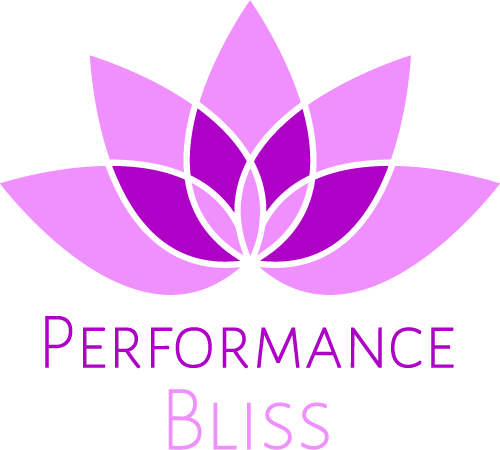Conducting a software engineer performance review can be challenging but is crucial for employee development and team success. Software engineers play a pivotal role in product development, maintenance, and innovation. A well-conducted review helps them stay aligned with company goals, enhances their skills, and boosts morale. In this article, we’ll explore the best practices for conducting a thorough and effective software engineer performance review.
Looking to simplify your performance review process? PerformanceBliss offers a comprehensive solution to help manage reviews, set goals, and track progress efficiently.
Establish Clear Objectives for the Software Engineer Performance Review
Before beginning the performance review, it’s important to define what you want to achieve. Consider both the technical and soft skills that are critical to the role. For example, while software engineers must be skilled in coding, they should also demonstrate strong problem-solving abilities, adaptability, and collaboration skills.
To ensure the review is balanced, create a list of core competencies. These should align with your company’s broader goals and the specific responsibilities of the software engineer. This clarity ensures that the review will focus on areas that matter most.
Pro Tip: Use tools like PerformanceBliss to customize review forms that reflect your company’s unique goals, helping you maintain consistency across all reviews.
Use Metrics and Data to Support Your Evaluation
Relying solely on subjective feedback can make performance reviews feel arbitrary. To avoid this, use objective data to measure performance. Key performance indicators (KPIs) provide measurable outcomes that can be tracked over time.
For instance, assess code quality by tracking error rates or bug reports. Measure efficiency by evaluating the completion of tasks within project deadlines. Contribution to team goals, customer feedback, and project delivery timelines can also offer insights.
Using performance metrics not only makes reviews more accurate but also gives engineers clear, actionable feedback. However, remember that while metrics are important, qualitative feedback is equally valuable.
Incorporate 360-Degree Feedback for a Comprehensive Review
Software engineers often work closely with product managers, designers, and other developers. A 360-degree feedback approach gathers input from a variety of stakeholders, providing a holistic view of an engineer’s performance.
Peers can offer insights into the engineer’s collaboration skills, while managers can comment on technical capabilities and leadership qualities. If applicable, gather feedback from clients or end-users who interact with the software.
This multi-source feedback ensures that the software engineer performance review doesn’t just focus on one perspective. It’s especially valuable in small teams where collaboration is essential.
PerformanceBliss simplifies the process of collecting 360-degree feedback, allowing you to easily integrate feedback from various sources into one cohesive review.
Evaluate Both Technical and Soft Skills
A balanced software engineer performance review assesses both technical competencies and soft skills. On the technical side, evaluate coding proficiency, problem-solving abilities, and adherence to best practices. Look for the ability to write clean, maintainable code, and ensure the engineer has a solid grasp of the tools and languages they use.
Equally important are soft skills. Software engineers need to communicate effectively, adapt to changing requirements, and work collaboratively with team members. Ask questions like, “How well does this engineer share ideas and accept feedback?” or “Does this engineer proactively mentor junior team members?”
Balancing technical and interpersonal assessments leads to a more well-rounded review.
Set SMART Goals to Guide Future Performance
Once you’ve completed the evaluation, focus on actionable takeaways by setting clear goals. Goals should be SMART—specific, measurable, achievable, relevant, and time-bound.
For example, a technical goal could be, “Improve code efficiency by reducing bug reports by 15% over the next quarter.” A career development goal might be, “Master a new programming language and apply it to an upcoming project within six months.”
SMART goals provide clarity, help employees track progress, and align individual performance with company objectives. Setting goals also ensures that the software engineer knows exactly what to focus on moving forward.
With PerformanceBliss, you can set and monitor SMART goals, allowing managers and engineers to track progress and adjust as necessary.
Schedule Regular Check-Ins Throughout the Year
A once-a-year performance review isn’t enough. Regular check-ins throughout the year ensure that employees receive timely feedback and can course-correct before small issues become major problems. These meetings can be informal but should focus on progress toward goals, challenges, and development opportunities.
Scheduling quarterly or biweekly meetings helps maintain open communication between managers and software engineers. During these discussions, you can evaluate how well the engineer is meeting their objectives and offer guidance if needed.
Check-ins also help reduce the stress and pressure of the annual review by making feedback an ongoing process.
Focus on Career Development in the Software Engineer Performance Review
Many software engineers are passionate about learning and growing within their careers. A performance review is an excellent opportunity to discuss their career development. Ask about their long-term career goals and how they see themselves evolving within the company. You can use this information to create a development plan that includes training, mentorship opportunities, or involvement in more complex projects.
Employees who see a clear path for advancement are more likely to remain engaged and loyal to the company. Highlighting potential career pathways during the performance review builds trust and motivation.
At PerformanceBliss, we help companies track individual career development plans, making it easier for managers to provide meaningful guidance and opportunities for growth.
Minimize Bias and Stay Objective
It’s important to recognize potential biases that could influence a performance review. Common types of bias include recency bias, where you focus too much on recent events, or the halo effect, where one standout performance overshadows other areas.
To ensure objectivity, rely on concrete data and seek input from multiple sources. Use consistent criteria across all reviews to maintain fairness and impartiality.
PerformanceBliss can help minimize bias by integrating objective performance metrics and providing tools to collect comprehensive feedback from various stakeholders.
Deliver Feedback Constructively and Offer Solutions
When delivering feedback, be specific and solution-oriented. Vague feedback doesn’t offer much value. Instead of saying, “You need to improve your coding,” say, “I noticed that some of your recent code has a higher error rate. Let’s explore ways to enhance the testing process.”
Balance constructive feedback with positive reinforcement. Acknowledge the engineer’s strengths and achievements while offering solutions for improvement. Constructive feedback combined with actionable steps ensures that employees feel supported in their development.
By tracking feedback and suggestions over time, PerformanceBliss helps managers and engineers follow up on agreed-upon solutions and action items.
Follow Up with the Software Engineer After the Performance Review
After the software engineer performance review, don’t let the conversation end there. Set up follow-up meetings to review progress on the goals you’ve established. This helps maintain momentum and ensures that feedback is being acted upon.
Following up also gives employees the opportunity to ask further questions or request support in specific areas. It keeps the lines of communication open and reinforces a culture of continuous improvement.
Conclusion: A Well-Executed Software Engineer Performance Review Drives Growth
Conducting an effective software engineer performance review is about more than just evaluating past performance. It’s about providing constructive feedback, setting clear goals, and fostering career growth. By focusing on both technical and soft skills, using objective metrics, and conducting regular check-ins, you can ensure that your reviews are both fair and impactful.
Streamline your performance review process with PerformanceBliss. Our platform offers the tools you need to conduct comprehensive reviews, set measurable goals, and track employee progress—all in one place.


